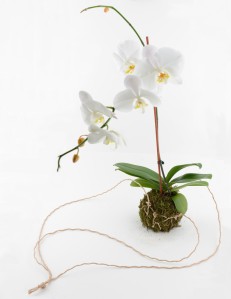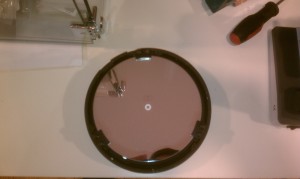We have recently added lots of Twig’s collection of Moss Terrariums and Kokedoma to our offerings at Spectrum Scientifics.
Moss Gardens are excellent gifts for people who struggle with indoor plants, or simplyprefer to have low maintenance plants with whimisical displays. They require almost no maintenance: simply keep them out of direct sunlight and mist them once every 2-4 weeks and you’re all set.
Twig’s terrariums run the gambit of whimsical displasy in lovely containers. They are made on demand so orders may take 5 days to ship, but the folks at Twig have perfected thne art of shipping live plants and guarantee that the plant will arrive healthy and intact.
In addition to Moss Terrariums. Twig also produces Kokedoma (String Gardens) and lovely gift planters which we will cover below.
First let’s look at the Terrariums.
 First up is the Grazed and Confused which fills and old-style apocethary jar. A pair of model sheep complete the landscape-in-a-jar illusion.
First up is the Grazed and Confused which fills and old-style apocethary jar. A pair of model sheep complete the landscape-in-a-jar illusion.
 The Uncharted Territory displays in a lidded glass bowl, a pair of lost model hikers who have gone off the trail complete the landscape diaroma effect.
The Uncharted Territory displays in a lidded glass bowl, a pair of lost model hikers who have gone off the trail complete the landscape diaroma effect.
 The Gentle Reminder is a great gift for your loved one as a model loved one (male or female, you pick) holds a sign reminded the other that they are loved. The jar is lovely and has a wooden ball stopper.
The Gentle Reminder is a great gift for your loved one as a model loved one (male or female, you pick) holds a sign reminded the other that they are loved. The jar is lovely and has a wooden ball stopper.
Other Moss Terrariums include The Water’s Fine and the Flora and Fauna DIY Terrarium (which includes plants besides the Moss)
Kokedama
Kokedama is a ball of Moss, wrapped in string and displaying an ornametnal or functional plant. Using the string the Kokedama can be hung anywhere in the home to create a lively and attractive bit of living art. Kokedama displays need soaking in water every few days.
 Twig makes several Kokedama, the most attractive of which is their Orchid Kokedama. This includes the ball, the string, care instructions, and of course and orchid plant. The orchid is an attractive plant even when not in bloom. I
Twig makes several Kokedama, the most attractive of which is their Orchid Kokedama. This includes the ball, the string, care instructions, and of course and orchid plant. The orchid is an attractive plant even when not in bloom. I
f you are looking for something a tad more functional or aromatic there is the Rosemary & Thyme Kokedama. This plant grows the popular herbs that you can trim off regularly and use for cooking or craft projects.
Also available is a Mint Kokedama for those who like their Ice Tea with a little bit of Mint. 
Funky Flora
A great way to say thank you with a lovely plant is to use one of the clever and whimisical Funky Flora plants and planters from Twig. The first and most hilarious is the Thankyousaurus. 
This Funky Flora planter is a 12″ x 15″ Dinosaur planter that comes with plants installed.
Also available is the Elephant in the Room Funky Flora, and impressive 12″ x 12″ pachyderm planter.
Also available is the Sheldon Turltle Funky Flora.
All Twig products are made on demand and require 5 days to prepare and ship (sometimes less). Shipping is assured that you will get a live and intact plant. However as the Terrariums are living things their lifespan cannot be guaranteed.
We now have an entire category on our website devoted to Terrariums and otherlive plants for you to peruse. You may find Terrariums not listed in this blog post.
www.spectrum-scientifics.com










